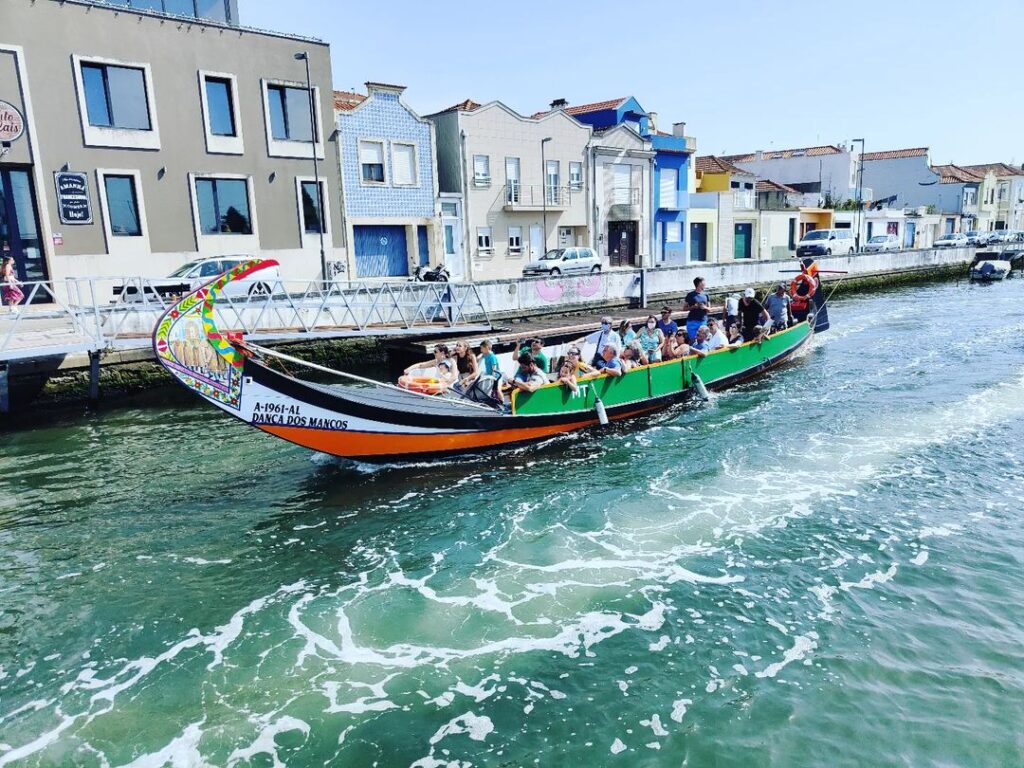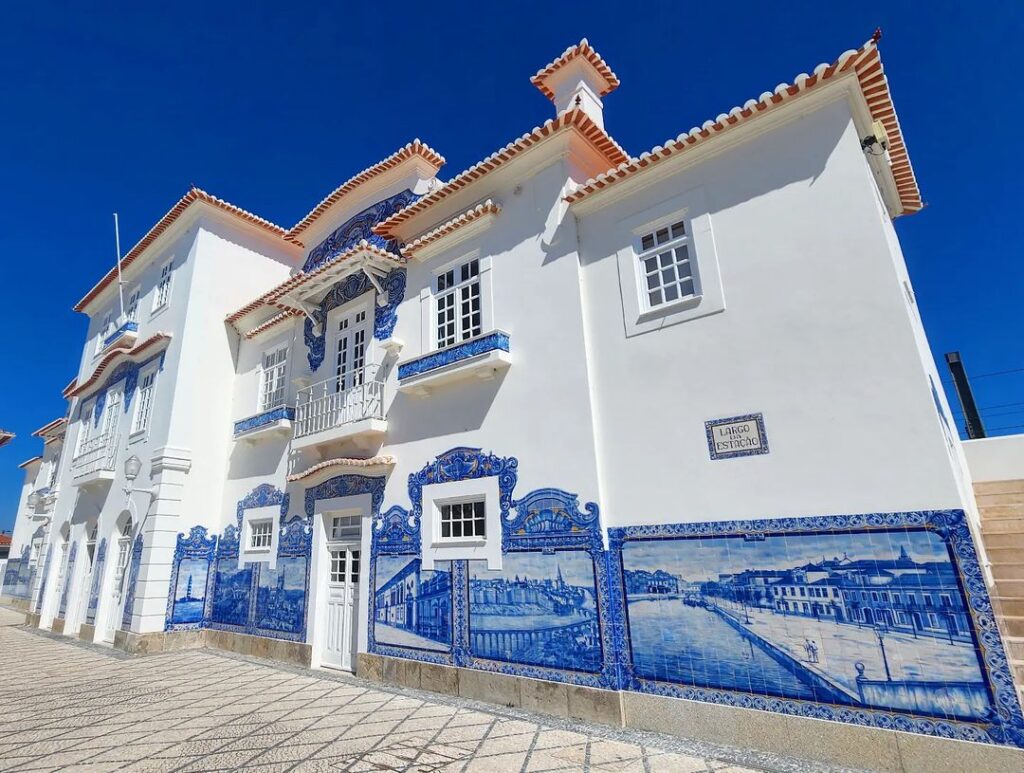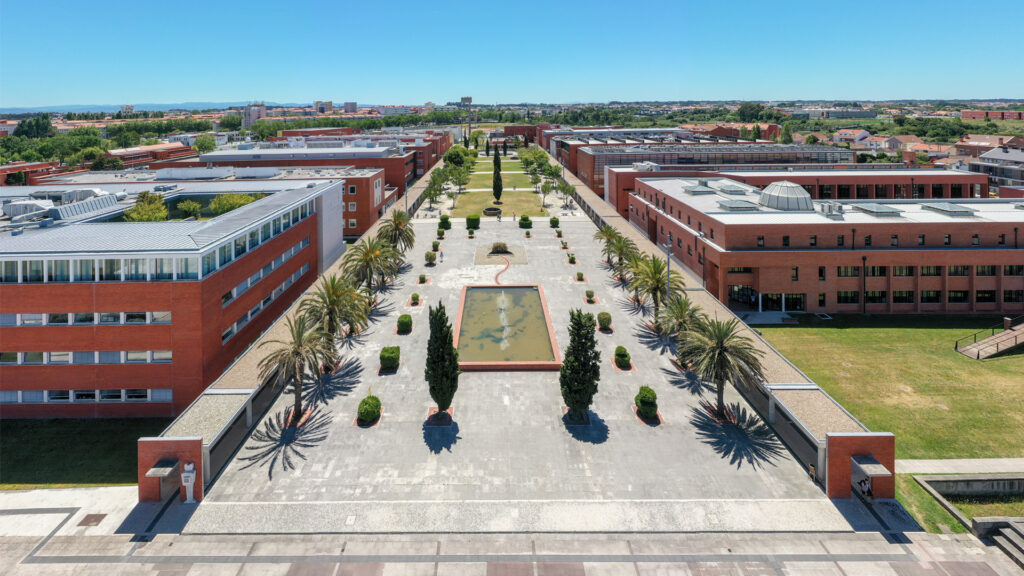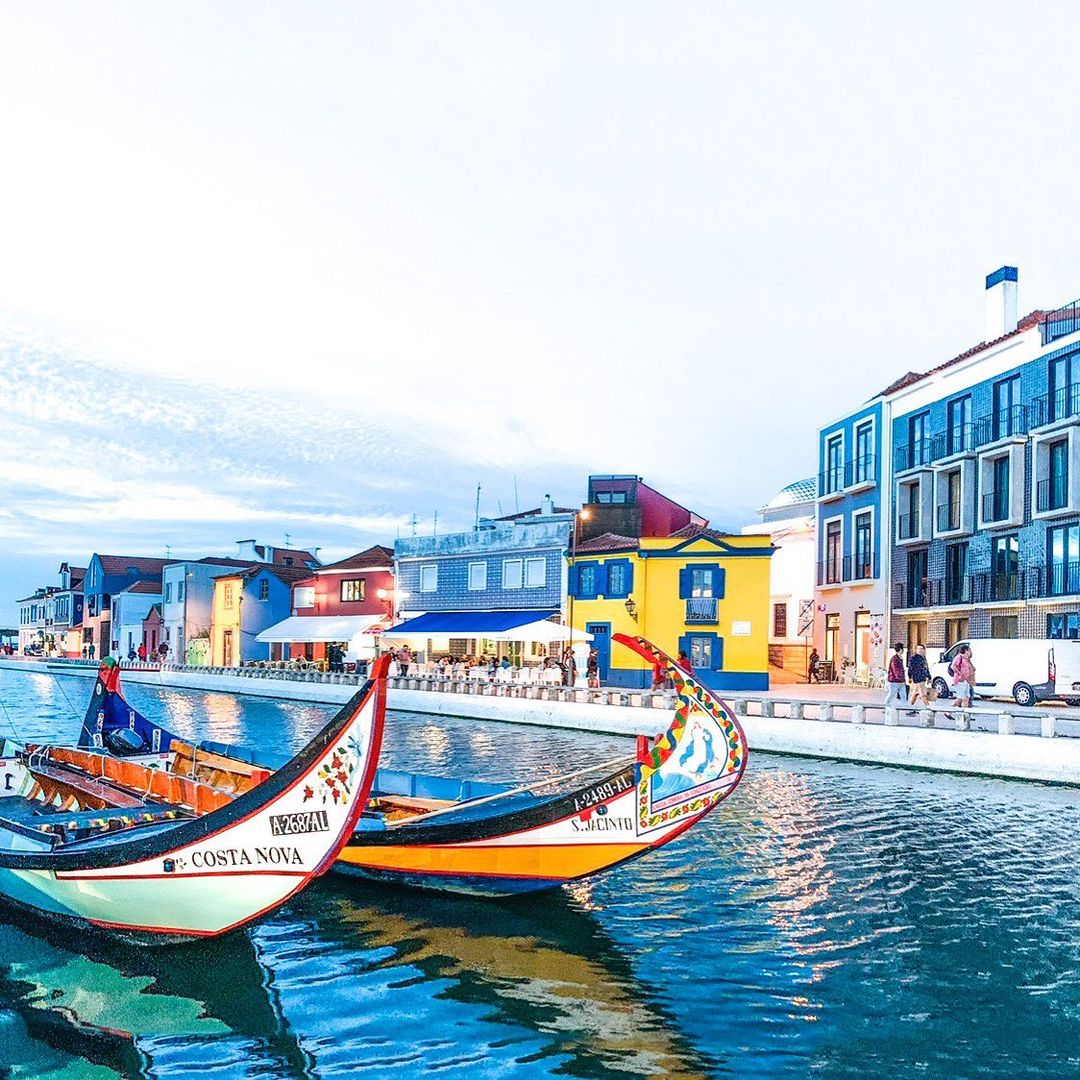Aveiro, a hidden jewel that radiates a special fusion of traditional beauty and modern vibrancy, is nestled along Portugal’s stunning coastline. This charming city, often referred to as the “Venice of Portugal,” is home to fascinating canals, vibrant moliceiro boats, and a variety of historical and cultural landmarks. Aveiro provides a variety of experiences that are guaranteed to please, whether you’re a history buff, a foodie, or just looking for a relaxing getaway. Here are seven activities you must do while visiting Aveiro, Portugal.
7 Things to do in Aveiro, Portugal
The small Portuguese city of Aveiro has a lot to offer, from lovely beaches to adorable alleyways with gorgeous pastel-colored cottages. There is still enough to see, but it’s a fantastic location to unwind after visiting Lisbon or Porto. If you’re travelling Portugal in a campervan, which is the best way to see the country, this also makes it a terrific day trip option.
1. Glide Through the Canals on a Moliceiro Boat
Taking a leisurely moliceiro boat trip is one of Aveiro’s most recognisable experiences. These exquisitely decorated boats, which were formerly used to gather seaweed, are now a well-liked tourist destination. You will be amazed by the scenic surroundings, colourful structures, and ornate bridges that highlight Aveiro’s distinctive character as you float down the tranquil canals.

2. Admire the Art Nouveau Architecture
With elaborate facades, complex ironwork, and fine craftsmanship decorating many of its buildings, Aveiro is a treasure trove of Art Nouveau architecture. The Aveiro Museum, which displays this creative movement through both its architecture and its collection of decorative arts, is the most well-known example.

3. Aveiros Old Train Station
Aveiro’s old train station covered in vibrant blue tiles, while getting to Aveiro’s new station you will notice this small building right next to it. The building includes 59 Azulezos (Panels) with scenery and faces which were recently restored to the tune of 1 million Euros.

4. Indulge in Delicious Regional Cuisine
Without indulging in some of Aveiro’s delicious cuisine, no trip there is complete. The area is famous for its delectable “ovos moles,” which are sweet egg yolk pastries frequently shaped like shells, fish, and other nautical symbols. The region is also well recognised for its fresh seafood. Don’t pass up the chance to sample the regional cafes and eateries for real Portuguese cuisine.

5. Relax on Praia da Barra
It’s often asked if Aveiro has good beaches, it does! Praia da Barra is only a short drive from Aveiro and is available to visitors wanting sun, sea, and sand. This beach, which spans along the Atlantic coastline, is well-liked by both locals and tourists. It’s great for swimming, lying on the beach and my favourite, beach Volleyball.

6. Visit the University of Aveiro
The University of Aveiro injects a youthful spirit into the city with its cutting-edge architecture and active campus life. The institution frequently sponsors performances, exhibitions, and cultural events that offer a distinctive window into Aveiro’s modern culture.

7. Discover Vista Alegre
Visit the Vista Alegre porcelain factory to learn more about Aveiro’s artistic history. You can see how beautiful porcelain is made here, with its delicate artistry. The factory also has a museum that chronicles the development of Vista Alegre’s trademark designs as well as the history of porcelain production in Portugal.

The ideal time to visit Aveiro ultimately depends on your choices and the type of experience you’re looking for. Aveiro has lots to offer all year long, whether you prefer the excitement of crowded summer streets or the serenity of a springtime getaway.
Is Aveiro the Venice of Portugal?
Aveiro is often referred to as the Venice of Portugal, however, I do not think that is a great comparison as doing so removes from the allure of the city. Visitors will often come with expectations while missing other areas and characteristics that bring a rich depth of historical Portuguese culture.
Best time to visit:
- Spring (April to June): Mild weather (15°C to 20°C) with blooming gardens. Fewer crowds allow for enjoyable exploration.
- Early Fall (September to October): Pleasant temperatures (15°C to 25°C) and relaxed atmosphere after peak summer. Ideal for sightseeing and local experiences.
Considerations:
- Summer (July to August): Warm temperatures, but high tourist activity and prices. Great for beach lovers but plan ahead for accommodations.
- Winter (November to February): Milder temperatures (5°C to 15°C) compared to other European destinations. Fewer tourists but some attractions may have reduced hours.
Here are a tip I recommend when visiting:
- Wear Comfortable Footwear: Aveiro’s streets are charmingly cobbled, which adds to the city’s character but can be a bit challenging to navigate in high heels or uncomfortable shoes. Opt for comfortable walking shoes to enjoy your strolls through the city without discomfort.
- Moliceiro Boat Tours: While taking a moliceiro boat ride is a must, it’s a good idea to book your tour in advance, especially during peak tourist seasons. This can help you avoid waiting times and ensure you get a spot on the boat of your choice.
- Language: While many locals in the tourism industry speak English, it’s always appreciated if you try a few Portuguese phrases. A simple “obrigado” (thank you) or “por favor” (please) can go a long way in terms of cultural appreciation.
- Public Transportation: Aveiro is a relatively small city that can be easily explored on foot. However, if you plan to venture outside the city center, the local bus system is a convenient and budget-friendly way to get around.
- Cash and Cards: While many establishments accept credit cards, it’s a good idea to have some cash on hand, especially for smaller purchases and in more rural areas.


Leave a Comment